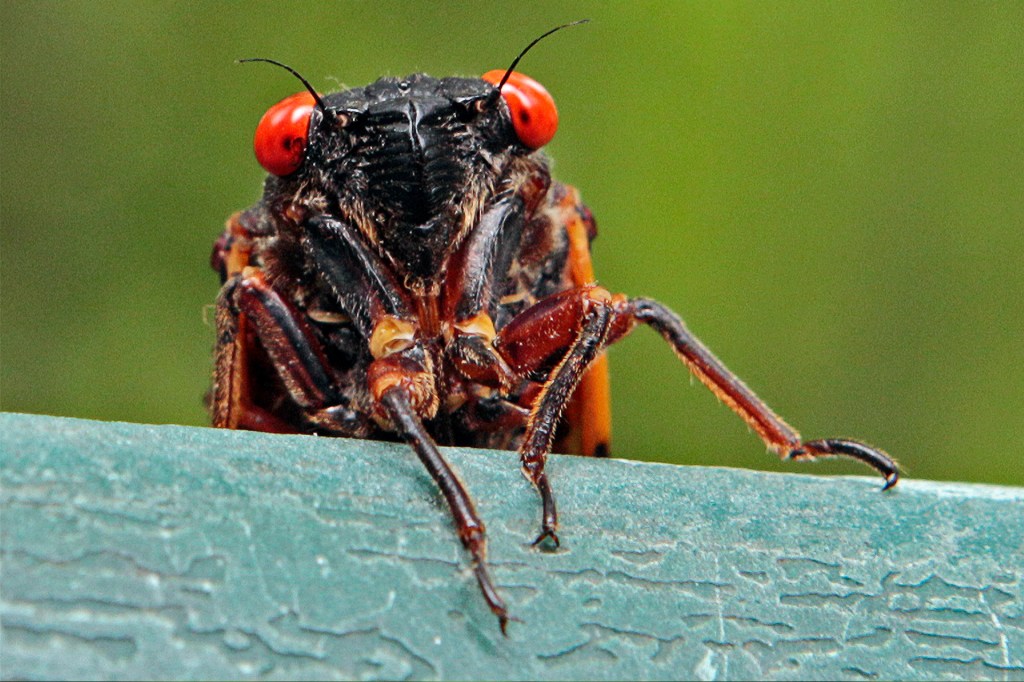
More than a trillion cicadas are coming to the United States. Two broods brood group (noun) A duck walked through the park, followed by her brood of ducklings. of the flying insects are coming up from the ground this month. People in the Midwest and Southeast are likely to see them. These people can expect a season of high-pitched buzzing.

Brood XIX cicadas show up every 13 years. Brood XIII cicadas show up every 17 years. The last time these two broods arrived together was in 1803, more than two hundred years ago. Here’s what you need to know about this rare event.
What Are Cicadas?
Cicadas are in the same family family a scientific grouping of related animals (noun) Dogs, foxes, and wolves belong to the canine family of animals. as stink bugs and bedbugs. For more than a decade, cicadas live underground. When they’re mature enough, they make their way out.
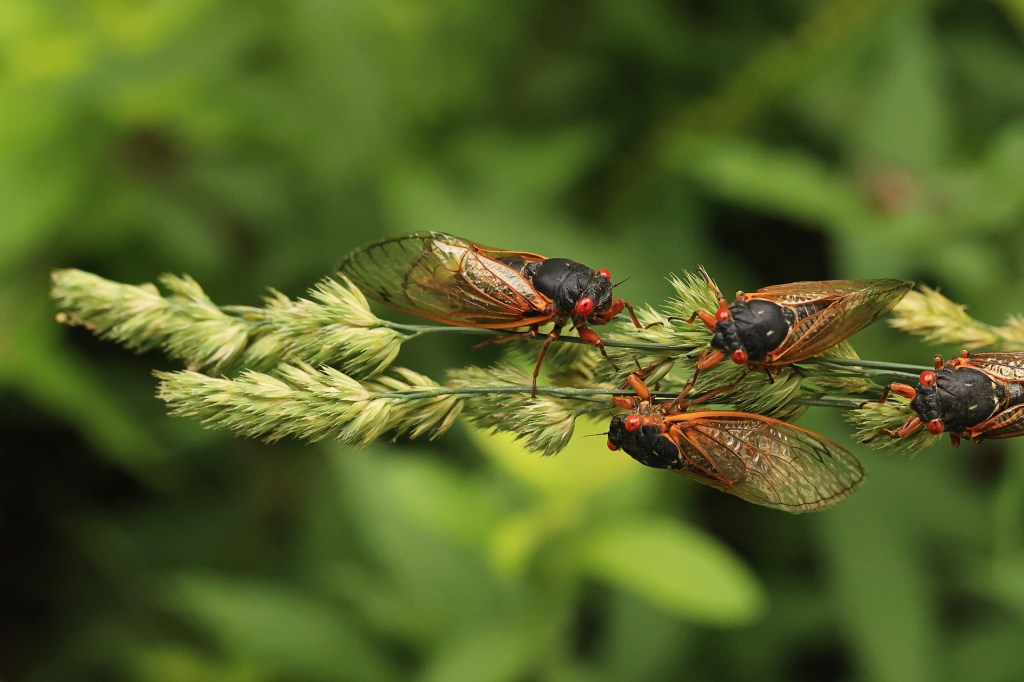
Hi, FRIENDS! These cicadas are members of Brood X. They emerged in 2021.
CHIP SOMODEVILLA—GETTY IMAGESCicadas are unusual because of their long life span. But they don’t live very long after they’re out of the ground. Once they emerge, they have only four to six weeks to mate. Then they die.
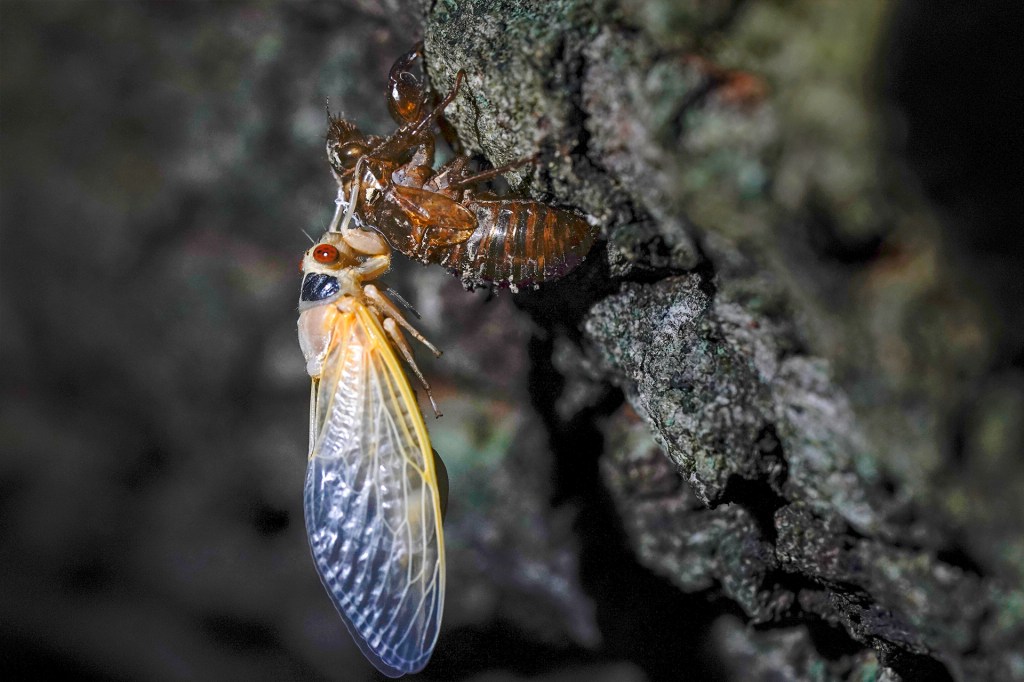
ALL GROWN UP This cicada is now an adult (left). It has shed its nymphal, or childhood, skin on an oak tree.
CAROLYN KASTER—APPeriodical periodical recurring after an expected period of time (adjective) The magazines were located with the other periodical materials in the library. cicadas are about an inch long. They’re identified by their orange wing veins. They have big red eyes. There are seven different species. Three of these species surface every 17 years. The other four emerge every 13 years.
Most cicadas show up right on time. But sometimes they “count the years” wrong. For instance, thousands of cicadas emerged in the year 2000, four years ahead of schedule.
What to Expect
Cicadas will be seen across several states. Probably only two states, Illinois and Indiana, will get to see both broods. Brood XIII might appear in Iowa, Michigan, and Wisconsin. Brood XIX might be seen in Alabama, Arkansas, Georgia, Kentucky, Louisiana, Mississippi, Missouri, North and South Carolina, Oklahoma, Tennessee, and Virginia.
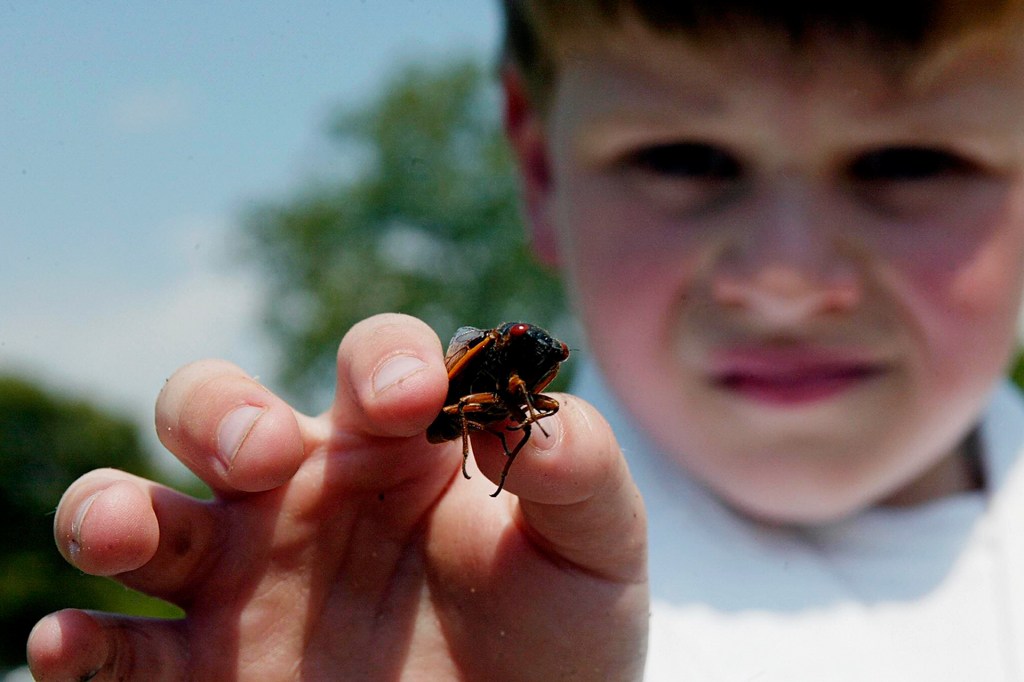
LOOK AROUND Do you live in one of the 15 states expecting cicadas this year? If so, how many can you spot?
STEPHEN JAFFE—AFP/GETTY IMAGESThe male cicada’s mating call is a loud buzz. Many people find it annoying. But cicadas are harmless to humans (see “Insect Impact”). They don’t sting or bite.
Insect Impact
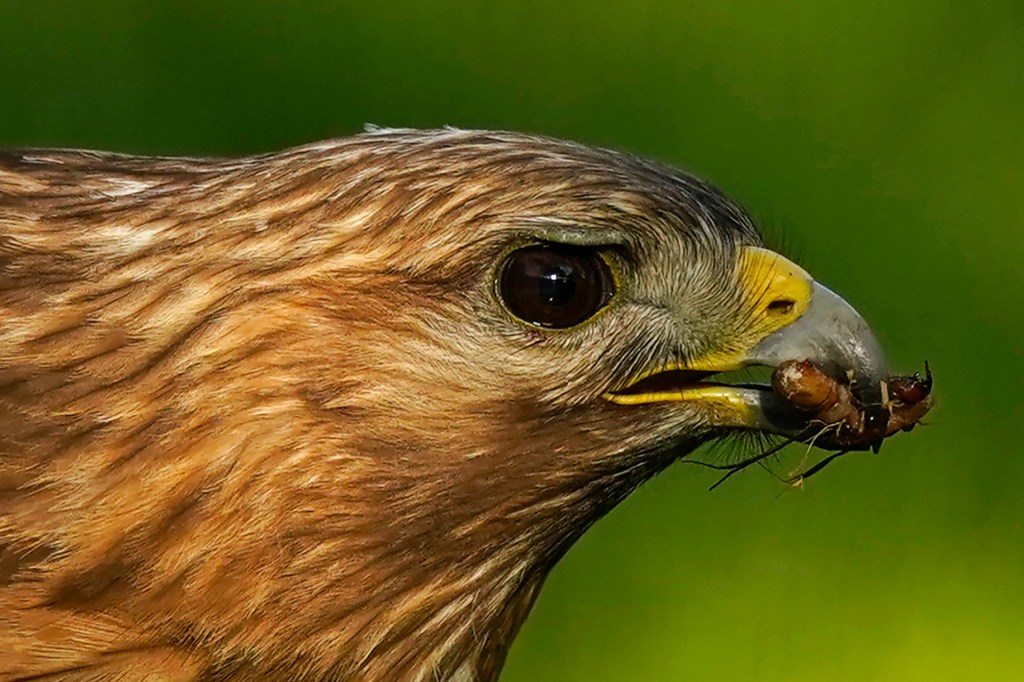
The Environmental Protection Agency (EPA) is a government agency. It monitors and protects the environment. The EPA says cicadas can have a positive impact on plants and animals. They’re a great food source for birds, such as hawks (left). And they’re nutritious for the soil as they decompose. Cicadas aren’t harmful to flowers or fruit. They only eat sap from trees and shrubs.
Female cicadas can damage a young tree if they lay their eggs in its branches. To protect trees, the EPA suggests covering them in netting. Cicada Safari is a website. It was created by Mount St. Joseph University, in Ohio. The site suggests wrapping a tree’s branches with cheesecloth. This will help keep cicadas away.













